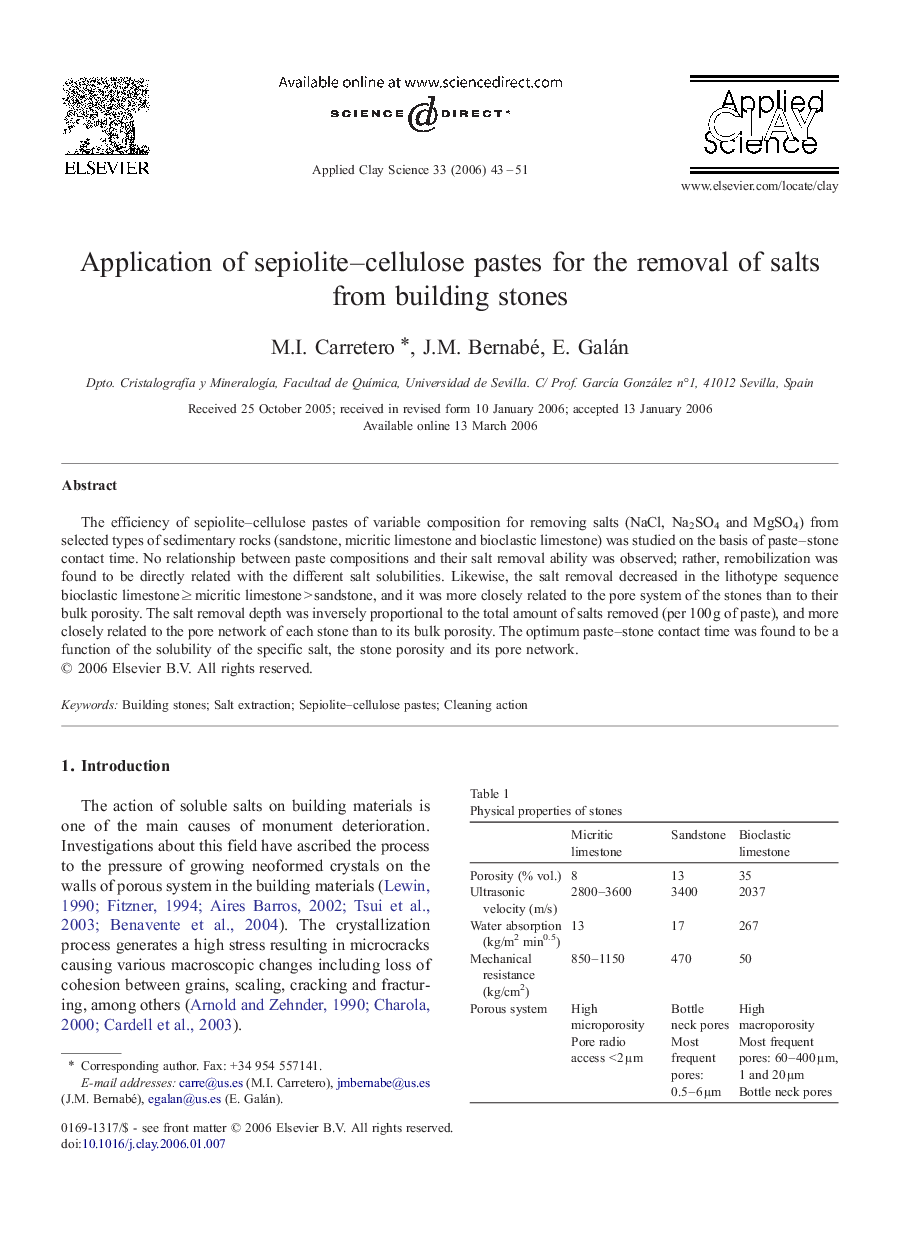| Article ID | Journal | Published Year | Pages | File Type |
|---|---|---|---|---|
| 1696625 | Applied Clay Science | 2006 | 9 Pages |
The efficiency of sepiolite–cellulose pastes of variable composition for removing salts (NaCl, Na2SO4 and MgSO4) from selected types of sedimentary rocks (sandstone, micritic limestone and bioclastic limestone) was studied on the basis of paste–stone contact time. No relationship between paste compositions and their salt removal ability was observed; rather, remobilization was found to be directly related with the different salt solubilities. Likewise, the salt removal decreased in the lithotype sequence bioclastic limestone ≥ micritic limestone > sandstone, and it was more closely related to the pore system of the stones than to their bulk porosity. The salt removal depth was inversely proportional to the total amount of salts removed (per 100 g of paste), and more closely related to the pore network of each stone than to its bulk porosity. The optimum paste–stone contact time was found to be a function of the solubility of the specific salt, the stone porosity and its pore network.
